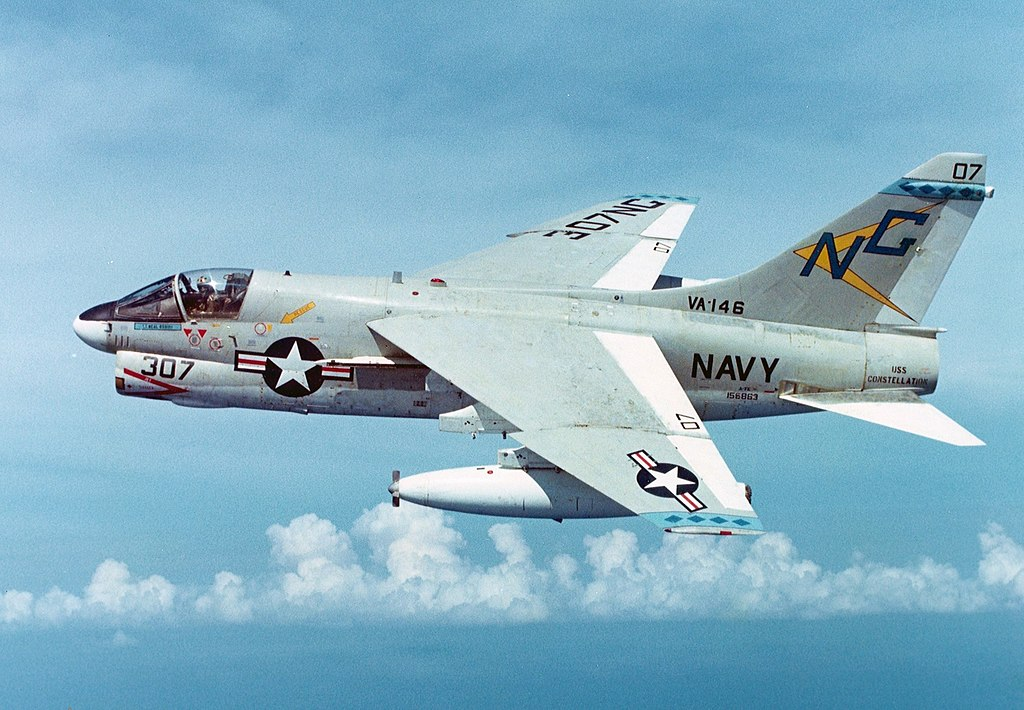
Few airplanes embody the evolution of U.S. air power throughout the Cold War like the Vought A-7 Corsair II. It was developed in the chaotic times of the Vietnam War and saw extensive service through to the closing pages of the Cold War. The A-7 etched a special niche in aviation history through its combination of precision, dependability, and innovative design.

The history of the A-7 starts in the early 1960s when the U.S. Navy was looking for a more advanced replacement for its tried and true but aging A-4 Skyhawk. The objective was obvious: design a carrier-capable attack aircraft with greater range, greater payload, and advanced avionics. LTV (Ling-Temco-Vought) rose to the task by basing the airframe of the F-8 Crusader. The outcome was a subsonic, single-seat jet that would become a ubiquitous workhorse of the Navy and Air Force.

What distinguished the A-7 was its forward-looking avionics. It was one of the first tactical planes to feature a digital navigation system, heads-up display (HUD), and integrated radar system. These innovations provided pilots with unparalleled situational awareness and targeting accuracy, day or night, regardless of weather—something few jets of the time could equal.

Under its skin, the A-7 was driven by a Pratt & Whitney TF30 or, in subsequent models, an Allison TF41 engine. Although not designed to be fast, it had a top speed of around 690 mph and an operational range of over 2,200 miles.

The Corsair II first went into combat in Vietnam, where it rapidly gained a reputation for precise bombing and battlefield survivability. Pilots enjoyed its responsiveness and sophisticated targeting, and commanders prized its ability to deliver with precision in adverse conditions. It became an integral component of the U.S. air campaign throughout Southeast Asia.
In the wake of Vietnam, the A-7 continued to see action in a variety of worldwide conflicts—in Cambodia, Lebanon, Grenada, Libya, and Operation Desert Storm. When the Gulf War broke out, only two Navy squadrons still operated the Corsair II, but they were significant during the initial phases of the Kuwait liberation campaign.

More than 1,500 Corsair IIs were manufactured in their different configurations. The Navy’s original A-7A version improved through the A-7B and A-7E, each gaining more power and improved systems. The Air Force had its versions—the A-7D and A-7K—each with modifications for its own mission sets, such as a higher-powered engine and an advanced Head-Up Display. There were even test versions, such as the YA-7F, which had an F-16 engine and tried to turn the airframe supersonic. Only two were constructed before the cancellation of the project due to changing defense priorities.

The Corsair II also found homes beyond the U.S. Both Greece and Portugal bought and used the plane into the 1990s. They liked how tough and easy it was to fix. Its name for working well made it a top pick for U.S. friends.

By the early 1990s, with new multi-job planes like the F/A-18 and F-16, the time for the A-7 was over. The Navy gave up its last Corsairs in 1991, and the Air National Guard did its last A-7 flights in 1993. But the plane’s good name lives on. Museums all over the U.S. now show off fixed-up A-7s, and work to fix them—like the 185th Air Refueling Wing in Sioux City—keeps its story going.

It helped define the modern precision strike mission, set new avionics benchmarks, and provided a bridge between early Cold War jets and today’s high-tech multirole fighters. For those who flew it and those who maintained it, the Corsair II is more than just a jet—it’s a symbol of innovation, grit, and getting the job done.
More related images you may be interested in:





